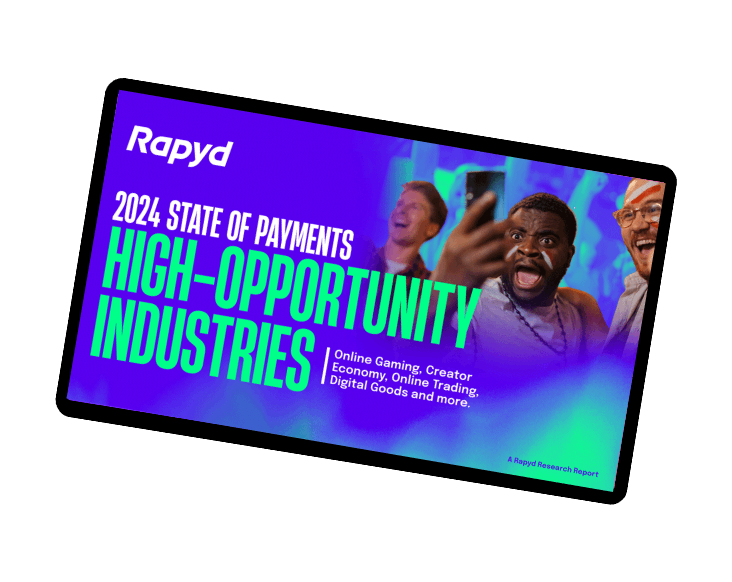What’s the Difference Between an ISO and a PayFac?
When Payment Service Providers (PSPs) are looking to offer online or in-store payments to merchants, choosing between ISO vs PayFac models can be complex. Both options can simplify the process for your merchants, but there are key differences in the ways these two types of PSP models operate, creating unique challenges and opportunities for each.
If your business is looking to turn payments into a revenue generator by partnering with a card acquirer, this article will break down the differences between ISOs and PayFacs to help you decide which Partner Programme is right for your business.
What is a PayFac?
A PayFac, or Payment Facilitator, is a service provider that simplifies the process of accepting payments for merchants. By managing responsibilities such as risk, compliance and relationships with acquiring banks, PayFacs offer simplified onboarding, which is particularly beneficial for small and medium-sized merchants eager to start accepting payments quickly.
How PayFacs Operate
- Setting up payment systems and integrating payment gateways.
- Onboarding merchants and performing KYC (know your customer) and AML (anti-money laundering) checks.
- Ensuring compliance with regulations like PCI-DSS.
- Onboarding customers, settling funds to customers and providing the first line of customer support.
What is an ISO?
An ISO acts as a reseller of merchant accounts (MIDs). They establish relationships with card acquirers and payment gateways and then connect merchants to comprehensive solutions to meet their payment needs. ISOs relieve merchants from direct dealings with processors or acquirers, providing high-touch support and industry expertise.
How ISOs Work
ISOs facilitate the merchant’s connection to the payment processor, which then handles payment authorization and fund settlement. They communicate terms, pricing, and other necessary details to the merchant, simplifying the sales process for all parties.
Key Differences Between a PayFac and an ISO
While both PayFacs and ISOs aid merchants in payment acceptance, they differ in several ways:
- Risk Management: PayFacs assume more liability for risks like chargebacks and fraud, while ISOs, as agents, have less involvement in direct payment processing.
- Onboarding: PayFacs have greater control over the application and onboarding process, whereas ISOs primarily focus on merchant sign-up. PayFacs may be able to offer faster onboarding for their clients because they have more control over the process.
- Settlement: PayFacs handle the settlement of payments to their merchants, offering more transparent transactions and maintaining more control of the entire client relationship.
- Contracts: In the PayFac model, contracts are between merchants and PayFacs, while in the ISO model, A tri-party agreement is executed with the ISO, merchant & acquirer.
- Technology and Infrastructure: PayFacs invest more in technology for managing payments and onboarding, while ISOs rely on the payment processor’s technology.
- Payment Processor Relationships: ISOs typically have broader relationships with multiple payment processors, offering more options to merchants.
How to Choose Between PayFac and ISO Models for Your Business
The decision between becoming a PayFac or an ISO depends on many factors, including the size and maturity of your business, onboarding speed requirements, fee structures, ability to provide first-line support, data visibility and settlement speed.
If your business is focused on delivering your own payment technologies, or if you’re looking to make payments a seamless part of a technology solution that you provide, then the PayFac model may be the best for you.
However, some businesses, like Integrated Software Vendors (ISVs), choose the ISO model to integrate payments seamlessly into their applications. This allows them to offer clients in-app payment experiences and earn revenue from transactions without the added complexities of managing compliance, onboarding and settlement.
If you focus on sales and support, then the ISO model could be the way to go, especially if you plan to offer a wide range of services like payment terminal leasing, and other third-party software integrations.
ISOs VS PayFacs
| PayFac | ISO | |
| Regulation
|
You’re required to be licensed with a financial regulatory body. | You’re not required to be licensed with a financial regulatory body. |
|
Legal |
You sign the contract with merchants. | A tri-party agreement is executed with you, your merchant and Rapyd. |
|
Onboarding |
You collect information and complete the KYC (Know Your Customer) & AML (Anti-Money Laundering). | Rapyd will perform KYC & AML. |
|
Settlement |
Rapyd settles to PayFac and PayFac settles to merchants. | Rapyd settles to the merchant & pays the ISO. |
Why Partner with Rapyd?
Rapyd offers comprehensive solutions for both PayFacs and ISOs, supporting businesses with improved card acceptance rates and accelerated onboarding.
How Rapyd Helps Partners Win-Win
- Global Reach: As a licensed card acquirer in the UK, EU, and Singapore, Rapyd supports a network of 900+ payment methods.
- Omnichannel Solutions: Our integrated solutions cater to eCommerce, POS and SoftPOS, ensuring seamless transactions across platforms.
- White-Glove Support: Our 24/7 support and responsive partner programs are tailored to meet your evolving needs.
Rapyd for Payment Facilitators: Choose Rapyd for global card acquiring with high authorisation rates, fraud prevention, chargeback handling and dedicated support.
Rapyd for Independent Sales Organizations: Let Rapyd manage global card acquiring for your merchants with API-based onboarding, fast merchant approvals, next-day settlement and compliance support.





